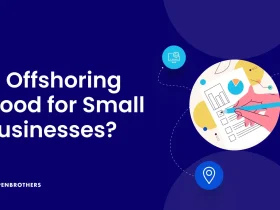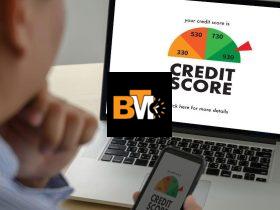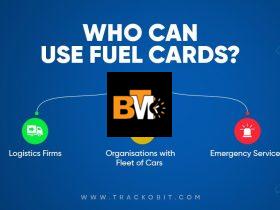Launching a startup is like setting off on an exhilarating adventure. It’s a journey filled with endless possibilities, challenges that force you to learn fast, and opportunities that can redefine your future. Whether you’re just sketching ideas on a napkin or already deep into product development, understanding how to grow your audience and attract investment is crucial. In this post, we’ll dive into practical strategies, share personal insights, and explore innovative tools that can help you stand out in the crowded startup ecosystem.
Laying the Foundation: Clarify Your Vision and Value Proposition
Every successful startup begins with a clear vision. Before you even think about scaling or attracting investors, ask yourself: What problem am I solving? Who benefits from my solution? Answering these questions lays the groundwork for everything that follows.
Define Your Mission and Goals
Start with a mission statement that resonates with both your team and your future customers. When you’re passionate about your mission, it becomes easier to communicate your vision. Think about startups you admire and how their founders’ clarity of purpose inspired them to persevere through the tough times.
Identify Your Unique Selling Proposition (USP)
Your USP is what differentiates your startup from the competition. It might be a technological innovation, an unconventional approach to customer service, or even your brand’s personality. Reflect on your early customer feedback and iterate until your product or service becomes a must-have. When your USP is clear, you’ll find it easier to market your startup and attract both a loyal audience and potential investors.
Personal Story: The Moment of Clarity
I remember when I first embarked on my entrepreneurial journey. I was overwhelmed by a sea of ideas and unsure which one had the most potential. The turning point came during a casual conversation with a mentor who asked, “What problem are you passionate about solving?” That question refocused my efforts on a niche where I could truly make a difference. It’s a reminder that sometimes, clarity starts with a simple conversation.
Building a Robust Product or Service: The Heart of Your Startup
Once your vision is set, your focus shifts to the product or service that embodies that vision. Creating a minimum viable product (MVP) is an excellent way to test the waters without overextending resources.
Embrace Iteration and Feedback
Develop your MVP quickly and don’t be afraid to pivot. Early adopters are your best source of real-world feedback. Their insights will guide you in refining features, improving user experience, and eliminating unnecessary complexities. Remember, every piece of feedback is a stepping stone toward a more refined offering.
Integrate Innovation Thoughtfully
Innovation isn’t just about high-tech solutions—it’s about finding smarter ways to solve problems. For instance, in today’s digital era, creative tools can play a significant role in enhancing your brand’s appeal. Imagine having the ability to create eye-catching visuals for your website, social media, or even investor presentations without needing a full-fledged design team. Tools like an ai image generator can help craft engaging content, making your marketing efforts more dynamic and professional.
Case in Point: Lean Startup Methodology
Many founders swear by the lean startup approach, which emphasizes rapid prototyping, continuous testing, and a flexible mindset. This method helps you avoid the pitfalls of building something that doesn’t resonate with your audience. By validating your ideas early, you’re not only saving time and money but also demonstrating to potential investors that your startup is agile and market-focused.
Attracting and Engaging Your Audience: The Role of Authenticity and Community
Your startup’s success is closely tied to its ability to connect with its audience. In an era where consumers crave authenticity, building a genuine connection can set you apart from the competition.
Craft Your Brand Story
A compelling brand story goes beyond the features of your product—it communicates your startup’s soul. Share the challenges you’ve overcome, the passion that fuels your team, and the vision that drives you forward. A well-told story can resonate deeply, fostering trust and loyalty among your audience.
Utilize Content Marketing
Content marketing is a powerful tool for engaging your audience. Whether it’s blogging, podcasts, or video content, providing valuable insights not only positions you as an industry expert but also builds a community around your brand. Share tips, industry news, and behind-the-scenes glimpses into your startup journey. The key is consistency—regular, genuine communication keeps your audience engaged and invested in your success.
Leverage Social Media and Influencer Partnerships
Social media platforms are indispensable in today’s digital landscape. They offer a direct line to your potential customers and investors. Tailor your messaging to fit the platform: use Instagram for behind-the-scenes visuals, Twitter for quick updates, and LinkedIn for more professional insights. Collaborating with influencers or industry thought leaders can also amplify your reach. When respected voices in your niche share your content, it builds credibility and broadens your audience.
Engage Directly with Your Community
Building a community means more than just accumulating followers. Engage in conversations, ask for feedback, and host events—be they online webinars or local meetups. The more you interact with your community, the more they feel a personal connection to your brand. These interactions can lead to word-of-mouth referrals, which are often more impactful than traditional advertising.
Navigating the Investment Landscape: Strategies to Secure Funding
While attracting an audience is essential, converting that interest into investment is the next critical step in your startup’s journey. Investors want to see potential growth, scalability, and a passionate team that can execute the vision.
Prepare a Compelling Pitch
Your pitch is your startup’s first impression on investors. It should be clear, concise, and tell a compelling story. Highlight the problem, your innovative solution, market potential, and how you plan to scale. Use data and real-world testimonials to back your claims. A well-structured pitch not only demonstrates your understanding of the market but also shows that you’re prepared for the challenges ahead.
Build a Strong Network
Networking is as much about who you know as it is about what you know. Attend startup events, join incubators, and participate in pitch competitions. The startup ecosystem thrives on connections, and sometimes a chance meeting can lead to a pivotal investment opportunity. Remember, networking is a two-way street—offer value and support to others in your community, and they’ll be more inclined to return the favor.
Show Traction and Potential for Growth
Investors look for startups that have demonstrated traction—whether that’s user growth, revenue milestones, or strategic partnerships. Share success stories, even if they’re small at first. It’s all about showing that your startup is on an upward trajectory. Being transparent about challenges and how you plan to overcome them can also build trust with investors, who appreciate a realistic approach over overly optimistic projections.
Personal Experience: Learning from Rejection
I’ve faced my fair share of rejections from investors. One instance that stands out is when I pitched an idea I was deeply passionate about, only to be told that the market wasn’t ready. Instead of feeling defeated, I used that feedback to refine my approach and better understand my target audience. Today, that same startup has grown significantly, all because I took the time to listen, learn, and adapt. Remember, every “no” brings you closer to a “yes” if you’re willing to iterate and improve.
Balancing Innovation and Authenticity
While it’s tempting to chase every shiny new tool or trend, true success in the startup world lies in striking the right balance between innovation and authenticity. Embracing new technologies can drive efficiency and creativity, but never lose sight of the core values that define your startup.
Integrate Technology to Enhance Your Story
Tools that streamline your processes or amplify your creative output can be incredibly beneficial. Whether you’re automating customer service or using digital design tools, integrating technology should always serve to enhance your brand story rather than overshadow it. Your startup’s narrative—its mission, struggles, and triumphs—remains the heartbeat of your business.
Keep It Human
Investors and customers alike are drawn to authenticity. In an age where automation and AI are on the rise, the human touch can be your most compelling asset. Whether it’s a handwritten note to a customer or a heartfelt response on social media, these genuine interactions build lasting relationships that technology alone can’t replicate.
Future-Proofing Your Startup
Staying ahead of the curve means being open to change. Continuously educate yourself about emerging trends and be prepared to pivot when necessary. This not only keeps your startup competitive but also demonstrates to investors that you’re forward-thinking. The willingness to innovate—balanced with a deep understanding of your market—is what sets lasting startups apart from fleeting trends.
Conclusion: Your Roadmap to Success
Developing your startup and capturing a wide audience while attracting investment is no small feat. It requires a clear vision, a deep understanding of your market, and the agility to adapt as you learn. By laying a strong foundation, iterating based on real-world feedback, and genuinely engaging with your community, you can create a startup that not only survives but thrives.
Investing in your growth—both personally and professionally—is essential. Learn from every experience, be it a success or a setback, and use that knowledge to refine your approach. Keep your narrative authentic, leverage innovative tools to enhance your creative efforts, and never underestimate the power of a genuine connection with your audience.
In the end, every startup journey is unique. Embrace the challenges, celebrate the victories, and remember that every step you take brings you closer to the audience and investors who believe in your vision. The path may be winding, but with passion, persistence, and a willingness to innovate, you’re well on your way to building a startup that makes a real impact.
Happy entrepreneuring, and here’s to your success!







Leave a Reply